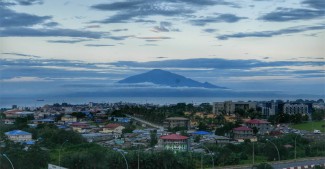This article is a modified version of an article initially published by the Pan-African Review.
The Secretary General of the Africa Continental Free Trade Area (AfCFTA) Secretariat, His Excellency Wamkele Mene, has identified four challenges holding back intra-African trade: market fragmentation, small-sized economies, lack of industrial capacity, and the continued exportation of primary commodities to traditional markets in the Global North. At their core, these challenges are interrelated and point to the importance of promoting a more active industrial policy, together with the ongoing trade policy effort at the heart of the AfCFTA. This is particularly key for Least Developed Countries (LDCs) situated in Africa.
The industrial policy does not mean manufacturing policy. The scope of industrial policy includes industries such as tourism, agriculture, mining and IT-based services, as well as the coordination of key enabling sectors like energy, finance and telecoms. It also does not mean protectionism: evidence is clear that the most effective industrial policies have been trade and export-oriented ones. Crucially, industrial policy is the policy to develop the productive capacity of a country by supporting the private sector to produce and export value-added goods, rather than primary ones.
Industrial policy is the most important of all economic policies because it is the only one that can bring coherence across the many disparate set of economic policies that governments have. It is also the only economic policy that deliberately targets the restructuring of the entire economy toward inclusive growth. Monetary, trade and fiscal policies are all important, but cannot play this leadership and coordination function.
Monetary policy, for example, is about money supply and demand, inflation management and exchange rate management. It doesn’t deliberately target the non-monetary economy: the capability of a country to make goods, provide services, create jobs and raise household incomes.
Trade policy also doesn’t deliberately target the capacity of a country to make goods and provide services. It focuses on improving the ability of countries to exchange goods and services with others by ensuring the flow of goods across borders. Whether or not the trade involves imports or exports, primary commodities or value-added goods is not its core concern. For this reason, while trade policy in Africa over the past three decades has been generally good at opening up markets and reducing cross-border barriers, it has not succeeded in addressing the challenges of small economies and market fragmentation that H. E. Mene mentioned. This is because sector development and trade facilitation are two different things. In fact, trade has facilitated value-added imports and primary exports, when what is needed much more is primary imports and value-added exports. Moreover, despite existing trade facilitation efforts, markets in Africa have not been able to defragment as much as they need to, and the main business vested interests have remained largely insular and cautious of the AfCFTA.
Similarly, fiscal policy cannot bring the coherence needed around productive capacity – even though on paper one might argue that it could through the government’s budget-setting process. Fiscal policy is chiefly concerned with fiscal stability like monetary policy is concerned with monetary stability. The emphasis ends up being on debt management and keeping the governments’ lights switched on while trying to mobilise as much tax revenue as possible. Over the past decades, efforts have been made to scale up medium-term plans for the budget following public financial management best practices. But this approach hasn’t really delivered strategic and structural shifts in many of the economies of the continent because fiscal policy alone cannot guide economies towards actually growing firm and industry capability without industrial policy. This is much the same reason why the chief financial officer of a business is a different role from the chief executive officer and the chief strategy and product officer. Financial sustainability and developing one’s capacity to produce and sell products are two different concepts, despite being related.
Industrial policy can bring coherence to all the above policies as well as to energy policy, land policy, transport policy, digital policy, education policy, and so on by giving a clear ‘real’ economy benchmark that they can all be anchored to. In particular, it can facilitate trade policy implementation. It does this in two ways. First, it allows for proper, constructive dialogue and collaboration with those that develop a country’s productive capacity - the private sector – on what holds them back from expanding and investing. Second, it channels that feedback from the private sector into the mammoth and multi-headed organisation that is the government, giving government leaders the ability to identify practical solutions to specific bottlenecks and to follow up on the solutions. So if an industry that has the potential to export value-added products to other African countries is facing market access bottlenecks, electricity bottlenecks, a skills gap and poor internet connectivity, industrial policy plays a ‘clearing house’ role to signal to trade facilitation stakeholders, electricity stakeholders, TVET stakeholders and digital stakeholders – all of whom are disparate groups of organisations and people in the government as well as non-government actors, with their own separate priorities, views, constraints and issues - that they need to respond and do their best to address the bottlenecks. And it can provide internal accountability and enforcement, using the executive powers of the head of state, to ensure follow-up by those stakeholders. With proper structures for support to these stakeholders, this allows for policy coherence around specific problems, investments and industries that government leaders can rally and organise around.
This last point is critical. H. E. Mene has also alluded to another critical ingredient for AfCFTA’s success: the direct involvement of the heads of state. For decades now, the African value-adding private sector has been clear that the most important condition it needs is policy coherence from governments, so it can plan accordingly and not face too many curve balls that disrupt their plans. If fiscal policy, electricity policy, land policy, TVET policy and so on are going in different directions, then the value-adding private sector significantly under-invests. Only heads of state and those directly empowered by them can coordinate the disparate ministries and agencies of government that shape such policies. This is particularly pertinent for LDCs, where intra-governmental coordination is harder due to lower capabilities. But for the last four decades at least, heads of state in Africa have not been provided with the key policy tool to coordinate these various policies. We have mistakenly thought that monetary, fiscal and trade policies could do this – but they have each shown they cannot.
So, for AfCFTA to meet its ambition and African LDCs to flourish, it’s time to unlock the transformative power of trade-oriented industrial policy in Africa so heads of state can coordinate governments and let the value-adding private sector and inclusive markets do their job in accelerating intra-African trade and the continent’s industrialisation and economic transformation.
---
The Enhanced Integrated Framework (EIF) works with LDCs to both create a trade and investment environment conducive for inclusive and sustainable growth and catalyse increased productive capacity for export development. For instance, the EIF, in partnership with the United Nations Economic Commission for Africa (ECA) and the International Islamic Trade Finance Corporation (ITFC), has launched a project aimed at helping six African countries (Burkina Faso, Guinea, Mauritania, Niger, Senegal and Togo) operationalize the African Continental Free Trade Area (AfCFTA), while at the same time investing into developing key sectors such as soya in Togo, added value in shea in Burkina Faso, leather production in Niger and mango development in Senegal.
If you would like to reuse any material published here, please let us know by sending an email to EIF Communications: eifcommunications@wto.org.



